2021 Volkswagen Golf GTI Review
Material content
Specifications
power unit
Such a hatchback, despite its generation, has always had a huge range of engines, so the 7th family is no exception. However, sadly, only 3 units from a rich range of various engines arrived in the Russian Federation. The reasons are unknown. It would not be superfluous to mention that such engines are now being installed on a brand new Passat B8.
The most “simple” engine is atmospheric, has a volume of 1.6 liters and an injection distribution function. Installed gas distribution mechanism type DOHC and 16 valves. As a result, it develops 110 horsepower. This is enough to reach the mark of 100 km / h in 10 seconds.
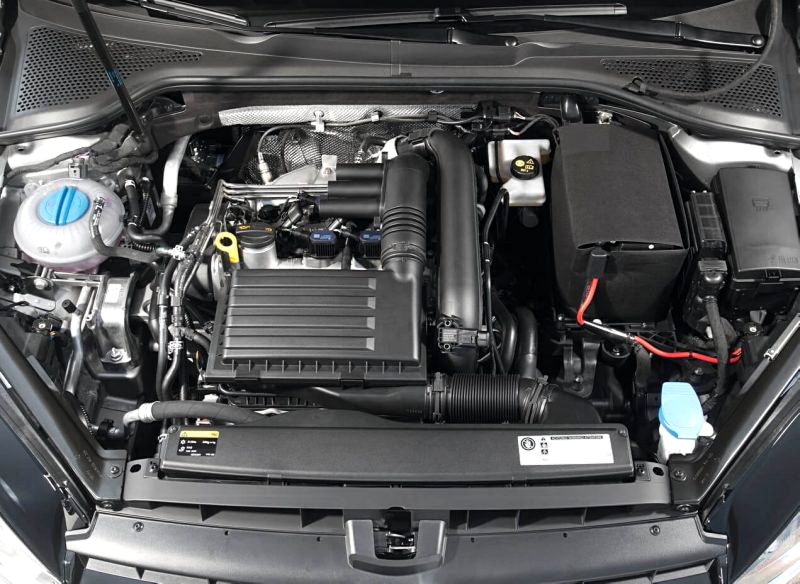
The power unit “eats” in urban mode about 8 liters, and on a straight line – 5 liters. Some do not recommend purchasing such a motor, but it has its main plus – reliability due to its rather simple design. Next comes a turbocharged 1.4-liter 125-horsepower engine that accelerates the compact hatchback in 9 seconds to the first hundred. “Maximum speed” is set at 204 kilometers per hour.
Today, many companies use turbocharging to save fuel in a quiet ride – it turns out that in urban mode the engine consumes less than 7 liters of 95th gasoline, and outside the city this figure drops to 4.3 liters. If we talk about efficiency, then the 1.4-liter engine is for you.
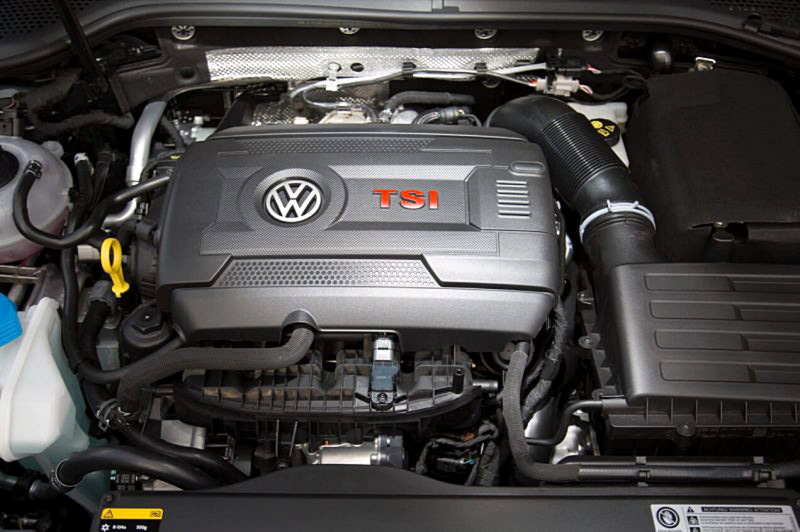
The line is completed by a similar 1.4-liter power unit, already producing 150 “horses”. This TSI motor has a lightweight winged metal block, direct power and variable valve timing.
The torque was also increased by 50 values (250 Nm), which reduced acceleration to 8.2 seconds. The maximum speed is 204-216 km / h. This unit consumes no more than 5 liters in the combined cycle.
Transmission
The 1.6-liter power unit is synchronized with a five-speed manual transmission or a 6-speed automatic transmission. The 125-horsepower unit can come with a six-speed “mechanics” or a 7-speed DSG robotic gearbox with a pair of clutches. The most powerful variant only comes with a seven-speed DSG, also with two clutches.
Suspension
The seventh generation Golf was built on the MQB modular base, where there is a load-bearing body, the base of which is 80 percent high-strength steel. The front axle received an independent McPherson-type suspension, and the rear suspension has several options. If there is a weaker motor, then a semi-independent beam is installed, when the engine is stronger – a multi-link system.
Steering
Volkswagen Golf 7 has a rack and pinion steering, as well as an electromechanical power steering with progressive efficiency.
Brake system
Disc brakes are installed on all wheels, where the front brakes are ventilated. The braking system functions together with the services of ABS, EBD, Brake Assist and more.
Safety
Judging by the statements of the manufacturers, the safety level 7 of the Golf family is the highest. These are not empty words – Euro NCAP tests conducted in 2012 showed that the latest version of the car deserves 5 stars. The car received the presence of 9 airbags, a rear collision avoidance system, as well as the ability of the car to automatically close the sunroof and windows.
Adult safety has the following rating – 94%, child safety – also 94%, pedestrian safety – 65%, auxiliary systems – 71%. IIHS security. The frontal test with a small area of overlap (25%) was rated good. The frontal test with partial overlap (40%) was rated good.
The side crash test was also rated good. The strength of the roof was rated as good. Head restraint safety was rated good. And this is the best estimate. There are 4 in total: good (G), acceptable (A), weak (M) and bad (P)
Video
Advantages and disadvantages
Machine advantages
- With each generation, the car became more stylish and enjoyable;
- Beautiful design;
- Small dimensions;
- There is a choice of powertrains and transmissions;
- New efficient light optics;
- Good aerodynamic performance;
- Excellent security;
- Rich even basic equipment;
- Good dynamics;
- Low fuel consumption;
- Pretty good noise isolation;
- Stylish salon;
- All elements are made with high quality;
- Excellent ergonomics;
- Comfortable seats;
- There is enough free space, despite the fact that this is a hatchback;
- Top-of-the-line trims come with a colored dashboard instead of a mechanical variant;
- The center console has a color touch screen that allows you to display the necessary information and navigation map on the screen;
- Nice suspension work;
- Quite acceptable pricing policy of the company;
- Rich story;
- There are versions with an all-wheel drive system;
- The rear backs fold down;
- Multifunction steering wheel.
Cons of the car Small luggage compartment; The passenger sitting behind in the center will interfere with the floor tunnel; Only 3 motor options are available for the Russian market; Many useful features are available only for a fee.
Advantages and disadvantages
After the change of generations, the German bestseller has significantly improved in many indicators and characteristics. The main advantages of the car experts include:
- high quality interior design;
- a lot of modern technical solutions;
- one of the best handling indicators in the class;
- the possibility of self-tuning the running gear by choosing between the available driving options.

Among the shortcomings of the hatchback can beeat:
- a very high price, which significantly exceeds the level of the cost of competitors;
- almost complete lack of choice of available configurations and technical capabilities.

Body and interior
If we analyze the changes that the new Volkswagen Golf received, then its body turned out to be smoother, which led to an increase in the aerodynamics of the car. In addition, some point changes have occurred with the appearance of the hatchback. In particular, it was equipped with matrix optics, as well as a new radiator grill, which visually merge into one unit. The rear part stands out due to the narrow LED lights, as well as a protective metal insert in the bumper.

The interior of the new Volkswagen Golf has become more sporty, vaguely reminiscent of the German Porsche in its execution. Another feature of the car is a minimum of physical controls and service activation keys. The main means of adjustment is a large touch display for controlling the multimedia system.

| Curb weight | 1333 kg |
|---|---|
| Fuel tank volume | 50 l |
| Luggage space – minimum | 381 l |
| Luggage compartment volume – maximum | 1237 l |
| Length | 4284 mm |
|---|---|
| Width | 1789 mm |
| Height | 1491 mm |
| Wheelbase | 2619 mm |
| Clearance | 142 mm |
Hybrid and non-hybrid
Since our cars are not, I take the closest option in terms of power – 150‑horsepower with DSG. And not simple, but with a little scarlet letter “e” in front of the TSI nameplate. This is a mild hybrid, in the depths of which a 48-volt battery and a starter-alternator are hidden. The electronic filling allows you to save a couple of liters of fuel per month. Isn’t it a significant contribution to reducing environmental pollution? But such machines have an adaptive DCC chassis available, which allows you to change the settings of the power steering and the characteristics of the shock absorbers.
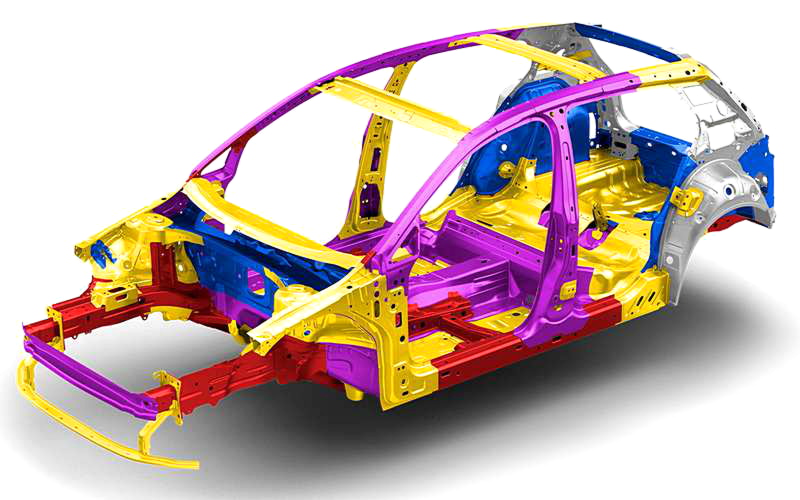 The new body is 36 mm lower. High-strength steel panels are marked in yellow, extra-high-strength steel panels are marked in red. Drag coefficient reduced from 0.300 to 0.275.The new body is 36 mm lower. High-strength steel panels are marked in yellow, extra-high-strength steel panels are marked in red. Drag coefficient reduced from 0.300 to 0.275.
The new body is 36 mm lower. High-strength steel panels are marked in yellow, extra-high-strength steel panels are marked in red. Drag coefficient reduced from 0.300 to 0.275.The new body is 36 mm lower. High-strength steel panels are marked in yellow, extra-high-strength steel panels are marked in red. Drag coefficient reduced from 0.300 to 0.275.
One and a half hundred turbopowers invigorate, but there are still slight pauses in the box switching and responses to the gas pedal. This is treated with the “sport” mode: the weight on the steering wheel grows, the shock absorbers are tightened … and all the flaws in the road are broadcast to the salon. It is better to choose the “individual” mode: you can remove the damping of the pedal, but keep the standard chassis settings. In this version, Golf filigree writes an arc and generates ideal feedback with German meticulousness, while not shaking the soul. But the feeling of artificiality does not leave me all the way. It’s like driving a big sedan instead of a compact hatch. Is the battery heavy?
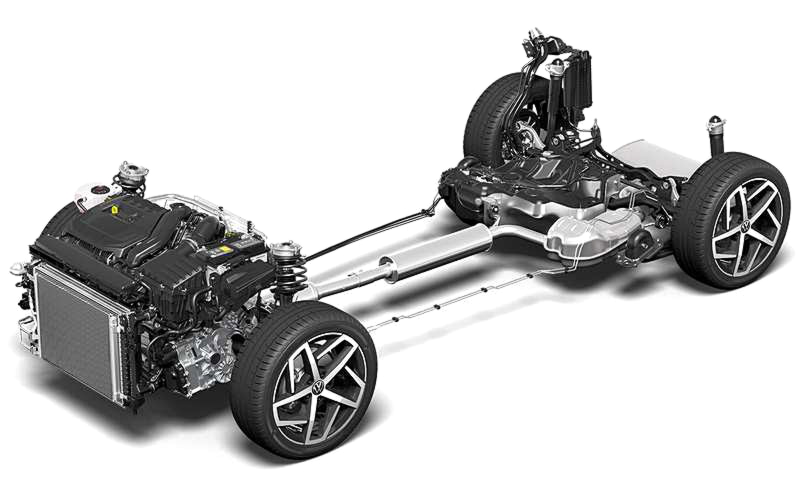 The chassis architecture has not changed – the Golf is based on the MQB platform. From now on, versions with 1.5 TSI can be supplemented with a 48 volt battery and a starter-alternator.
The chassis architecture has not changed – the Golf is based on the MQB platform. From now on, versions with 1.5 TSI can be supplemented with a 48 volt battery and a starter-alternator.
The chassis architecture has not changed – the Golf is based on the MQB platform. From now on, versions with 1.5 TSI can be supplemented with a 48 volt battery and a starter-alternator.
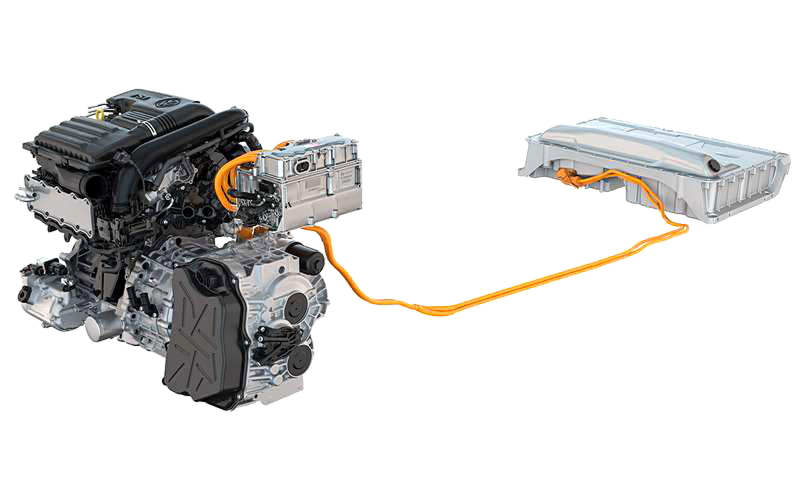 The rechargeable hybrid is of interest to us primarily because it uses the same engine that will be delivered to Russia – a 1.4-liter TSI with a capacity of 150 hp.
The rechargeable hybrid is of interest to us primarily because it uses the same engine that will be delivered to Russia – a 1.4-liter TSI with a capacity of 150 hp.
The rechargeable hybrid is of interest to us primarily because it uses the same engine that will be delivered to Russia – a 1.4-liter TSI with a capacity of 150 hp.
For an answer, I jumped into a 130-horsepower non-hybrid. With a manual, a simple chassis and a rear beam instead of a multi-link. How to look into the water! Two liters of fuel saved in a month is not worth denying yourself this pleasure: an honest, understandable car! Inferior in dynamics 150‑horsepower mild hybrid, but goes right and easy! The same steering intelligence. After it, I even more want to wait for our Russified version with simple gasoline engines.
Maybe they will finish the soundproofing? And then the tires shamelessly rustle against the backdrop of a filigree insulated engine compartment and polished aerodynamics.
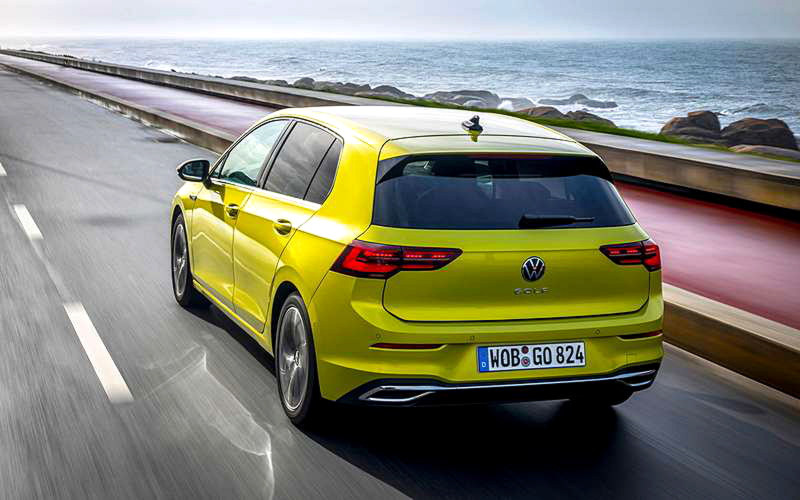 Volkswagen Golf VIIIVolkswagen Golf VIII
Volkswagen Golf VIIIVolkswagen Golf VIII